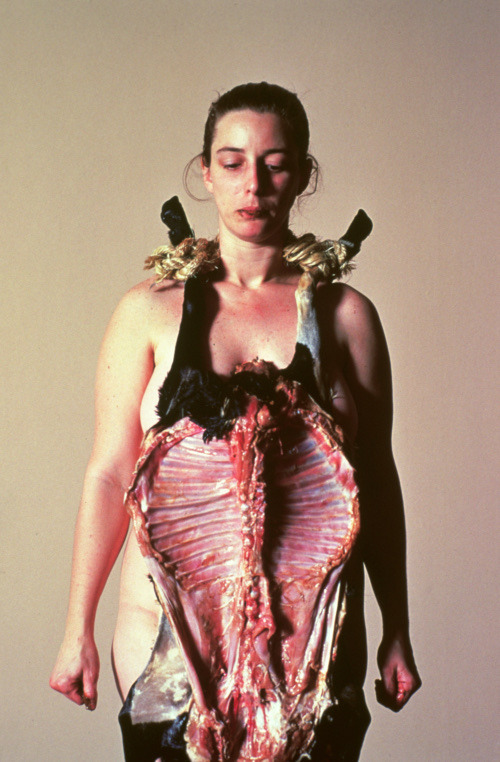#tania bruguera
Text
by Seth Mandel
Bruguera is—quite famously, though her name is a hint—a Cuban dissident. The Palestinian protesters got in her face and called her “gringa.” They called one of the gallery’s directors, Sam Bardaouil, who is Lebanese, “an Arab with light skin.” In other words, Germans were seeing the familiar sight of anti-Semites marching through town calling anyone with Jewish friends or colleagues a “race traitor.” Onlookers were horrified to see the ghosts of Germany’s past reappear wearing keffiyehs instead of jackboots.
Easily the most pathetic part of the play stoppage was when Bruguera tried to defend her honor. I cringed watching it, and I cringed again while writing this. “First of all, you don’t know who I am,” Bruguera shouts at the protesters after a while. “You don’t know my history. You don’t know everything I’ve done for Palestinians and for all the people in the world.”
The clashing of tectonic-plate-sized egos, white people yelling at Cubans that they’re white—it might as well as have been Park Slope instead of Berlin.
Of course, Bruguera signed an open letter calling Israel’s counteroffensive in Gaza a “genocide.” But she was out of her league here, among professional anti-Semites. The protesters went on a stark-raving-mad rant about the lesser humanity of “Zionists” (meaning people with Jewish-sounding names) and the legitimacy of violence toward them while this poor woman was reduced to asking them if they had a gun and were going to shoot her. For that, Bruguera was deemed a racist.
The icing on the cake is that before the performance opened, Bruguera gave an interview to the The Art Newspaper’s podcast, “The Week in Art.” In it, the host and Bruguera went on at length about how this is such an appropriate time to read Hannah Arendt because of how Germany censors anyone who criticizes Israel. Bruguera went so far as to say that Chinese dissident Ai Weiwei’s ridiculous comment that censorship in the West is the same as in Mao’s China didn’t go far enough. “I think it’s worse” than in Mao’s China, Bruguera asserts, because “the censorship in China was [at least] condemned by the world.”
#tania bruguera#palestinian protesters#hamburger bahnhof#berlin#hannah arendt#art#gaza#hamas#professional anti-semites
10 notes
·
View notes
Text
Totalitarianism Unveiled in Tania Bruguera's Powerful Defiance Performance
Artist and activist Tania Bruguera addresses the dangers of totalitarianism in a new performance. Photo: artist.
Tania Bruguera’s impactful performance on totalitarianism, featuring Hannah Arendt’s work, is a reminder of the enduring relevance of intellectual resistance and the power of art in shaping a more inclusive society.
BY KAZEEM ADELEKE, ARTCENTRON
BERLIN, GERMANY—In the past few…
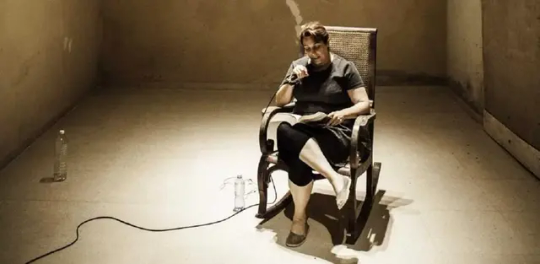
View On WordPress
#Art and Politics Authoritarianism#Artistic Freedom#Artivism#Civic Engagement#Cuba&039;s Artistic Activism#Hannah Arendt Political Art#Intellectual Resistance#Tania Bruguera#Totalitarianism
0 notes
Text
Arte cubano en alza: una mirada a los artistas destacados en la subasta Latin American Art Online de Christie's (14/03/2023)

View On WordPress
#Belkis Ayón#Carlos Alfonzo#Carlos Garaicoa#hablandodemercadodearte#Luis Cruz Azaeta#Manuel Mendive#Rafael Soriano#Roberto Fabelo#Tania Bruguera#Victor Manuel#Wifredo Lam#Yoan Capote
0 notes
Text
Manuel Milanés sitúa -bien situada- a la menchevique Tania Bruguera - ZoePost
Manuel Milanés sitúa -bien situada- a la menchevique Tania Bruguera – ZoePost
Por Redacción ZoePost. El empresario e influencer Manuel Milanés sitúa -bien situada- a la menchevique Tania Bruguera, cuya agenda es más socialcomunismo para Cuba mediante el cambio fraude orquestado por Raúl Castro, Barack Obama y Alejandro Castro Espín, para el que se prestaron y se prestan Yoani Sánchez, su marido, Yunior García Aguilera y Carolina Barrero, las figurinas del nuevo…

View On WordPress
0 notes
Note
this is an odd request but an Earnest one...
Do you have any favorite paintings of wounds?
Sorry it took me a second to get to this- I have been genuinely thinking about it and trying to come up with an answer.
I think my answer is this:
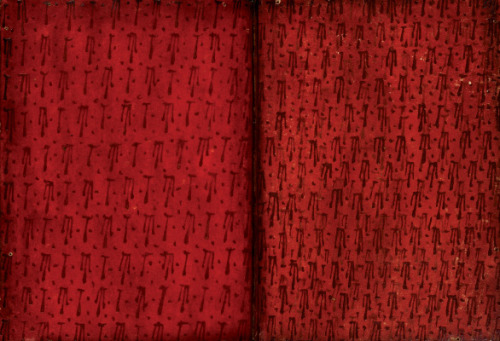
It is listed in Medieval Bodies: Life, Death and Art in the Middle Ages, by Jack Hartnell as
"A page from a devotional book made for an unknown Englishwoman soon after 1480, showing a mass of Christ’s blood and the individual wounds of his skin."
I find this work incredibly moving, and touching, because the body has been so abstracted but the wounds are very real. Wound after wound after wound with blood on a background of bloodied skin. There's something really powerful to me about the wound as subject, as focus, but taken entirely away from the body.
This work, to me, is more meaningful than other Jesus's side wound works, because the focus becomes not on the individual would that killed him, or the entrance of Thomas's hand into the wound to prove its realness, but the multitude of wounds that destroy together, cumulatively.
I also think about the work The Burden of Guilt by the Cuban artist Tania Bruguera (1997) in which the artist stands naked, wearing the flayed body of a lamb while eating soil mixed with salt and water (representing tears).

For 45 minutes, Bruguera ate the soil in reference to stories about indigenous Cubans vowing to eat only soil rather than be captives to Spanish colonists.
The writer Edward Rubin described the work as "[a] harrowing piece... first performed in Havana, where the audience was duly reminded that freedom, liberty, and self-determination are not abstract ideals, but achievements that deeply inscribe their meaning on our physical being."
I like this work for a multitude of reasons, but like it as an image of a transposed wound, a wounded body representing the bodies of many, and of taking on of generational wounds, both literal and figurative.
161 notes
·
View notes
Text


Trouble
1.
Lady, you crave trouble, you just don't want resistance. Das ist ein Zitat, das nicht auf Tania Bruguera zielt. Tania Bruguera setzt sich und ihre Rechte durch, richtig so, was sonst? Tania Bruguera sitzt hier nicht auf dem kurulischen Stuhl, nicht auf jenem Wagen- und Richtstuhl, der in Rom auch Sitz des ius imaginum gewesen sein soll und dessen Geschichte man auf Aby Warburgs Staatstafeln nachverfolgen kann. Tania Bruguera sitzt auf einem Stuhl mit Rückenlehne und Armlehnen. Das ist zwar immerhin ein Schaukelstuhl, aber kein Klappstuhl. Ein Polobjekt ist dieser Stuhl auch, auch wenn der Sitz im Schaukelstuhl eher ein Sitz für Rentner ist und nicht für diejenigen, die es wagen, regieren zu wollen. Das ist eine Kunstaktion: Rechte durchsetzen, Schaukelstuhl. Ironie, Widerspruch und Zynismus kann drin stecken, ist ja keine Beratung und nur die Berater dürfen nicht zu sich sein, der Rest darf das.
Im Hamburger Bahnhof habe Bruguera Arendt gelesen, wollte 100 Stunden lesen, brach aber nach 88 Stunden ab, so hieß es in Artikeln, die vermutlich von Leuten geschrieben wurden, die nicht dabei waren. Denn es wurde nicht nur Arendt gelesen und nicht nur Bruguera hat gelesen, sondern auch ein Haufen von Palästinenserfreunden und Israelkritikern, vielleicht soger dem einen oder anderen, der nicht frei von der Schuld ist, einmal ein Humpen Hass im Hals gefühlt zu haben und dann was Wüstes gesagt hat. Es gab Widerstand, anders als am 20. Juli 1964 in Aachen, anders als Beuys blutig geschlagen wurde, aber Gewalt brach ein, als über Gewalt gesprochen wurde. Die Kuratoren haben abgebrochen. Andreas Kilb hat in seinem Kommentar in der Qualitätszusammenpresse gesagt, jetzt sei klar, was BDS wolle, das Ende des Denkens. Glückwunsch Kilb, sie haben das Ziel erreicht und wissen bereits, wo das Denken endet, ich eile hinterher, stoße bald zu Ihnen! War Kilb dabei? Sein Kommentar ist kurz und knapp, der ist zusammengepresst, dichte Qualität, das ist Qualitätszusammenpresse, in der andere etwas vom Denken für den Leser übernehmen, unter anderen das Nachdenken darüber, welche Details man berichtet und welche nicht. Ich weiß nicht, ob er vor Ort war, der Kommentar ist so kurz. Kommentare lassen auch immer ein bisschen das Denken enden, aber nur, um es anfangen zu lassen.
2.
Das sind alles furchtbare Situationen, deren Rechtfertigung die Auseinandersetzung reproduzieren. Das ist Krieg, an dem wir eventuell teilnehmen wollen und nicht teilnehmen wollen. Lady, you crave trouble, you just don't want resistance. Hamburger Bahnhof, ihr wollt Spektakel, aber in und als genießbares Häppchen? Im Schaukelstuhl, fantastisches Symbol! Oh gemütich! Das MPI muss sich zu recht fragen, warumdem Ghassan Hage eigentlich so spät die Gastfreundschaft gekündigt wurde und der Hamburger Bahnhof die Veranstaltung so spät angebrochen hat. Vielleicht hätte man Hage auch Gast sein lassen können? Hätte man nicht gleich abrechen müssen, als deutlich wurde, dass die Zuschauer die Situation ernst nehmen und nicht bloß als Show begreifen, also im Grunde genommen in Sekunde 1? Hätte man nicht Hage von Afangag an sagen sollen, dass man seine Werte nicht teile und ihn darum nicht als Gast empfangen könnte? Nein, denn man teilt Werte so, wie man Probleme teilt. Sind seine Werte so neu oder die des MPI? Es gab wohl eine Wende, die scheint mir aber von der Qualität eines Wetterumschwungs, wie windige Meteorologie.
Where Your Ideas Become Civic Actions: die Veranstaltung in Hamburg hieß so, das war eine Einladung, einen Ort zu eröffnen, an dem aus Ideen Aktionen werden. Ich empfehle, diesen Konflikt nicht auf Schuldfragen aufzusetzen, nicht auf die Antwort der Frage, wer angefangen hat mit der Gewalt, aufzusetzen. Alles ist schon da und zerrissen, also nicht ganz da und nicht ganz weg. Wir sitzen alle knietief im schlammigen Bodensatz der Gründe, mindestens knietief. Alles, was man in der Auseinandersetzung nutzt, um Halt zu finden, ist bereits polarisiert, jedes Wort, jedes Bild, jeder Erinnerung, jede Vorstellung davon, was Ruhe und was Krach ist, was stimmt oder Stimme haben soll und was nicht stimmt oder keine Stimme haben soll. Die Aktivisten hätten sehen können, dass Bruguera auf einem Schaukelstuhl, einem Rentnerstuhl sitzt und nicht mehr auf einem kurulischen Stuhl, dass sie also vielleicht die Auseinandersetzung nicht mehr führen, nur noch wie ein Vorbei und früher mal oder außerhalb der Zeit vorführen will.
Vielleicht haben die Aktivsten es gesehen und vielleicht ist ihnen Gewalt kein Tabu, wie etwa Polizisten und Soldaten Gewalt auch kein Tabu ist, sondern Mittel zum Zweck. Vielleicht haben Sie den Titel der Aktion zu bildlich vor ihrem geistigen Auge mit politischer Imagination verbunden, vielleicht haben die den Titel der Aktion zu wörtlich genommen. Vielleicht respektieren sie das Gewaltmonopol des Staates nicht, so wie der Herr Müller von Müller Milch das Gewaltmonopol des Staates nicht respektiert, wenn er seinen Wohnsitz ins Ausland verlegt, weil er Steuern und Gerichtsvollzieher nicht einfach respektieren und sich nicht einfach jedem Staat unterwerfen will, sondern sich unter anderem nach Kassenlage den Staat aussucht, dem er sich unterwirft. Im Moment ist das die Schweiz, aber glaubt der wirklich, die Schweizer seien unfähig, Steuern zu erhöhen und darum sei auf ewig Schweiz was immer schon Schweiz war? Am Anfang war die Schweiz und die Schweiz war bei Gott? So doof ist der auch nicht. Man kann das alles skandalisieren und die Remigration der Steuerflüchtlinge fordern, Journalisten haben teilweise die Aufgabe, zu skandalisieren, man sagt: Skandale aufzudecken. Ganz falsch ist das nicht, ganz richtig auch nicht. Wenn man ein Interesse an der Auseinandersetzung um die Aktion im Hamburger Bahnhof hat, ist die beste Möglichkeit, mit allen Beteiligten zu sprechen, sie aufzusuchen.
Aby Warburgs Rechtswissenschaft ist eine vergleichende Normwissenschaft, wenn man so will vergleichende Trubelwissenschaft, vergleichende Spektakelwissenschaft, vergleichende Skandalwissenschaft, Wissenschaft des Vergleiches von Streit, Konflikt, Krieg, Gewalt, Wissenschaft vom Vergleich jüngster Gerichte und ältester Apokalpysen.
In der Einleitung des Atlas und im Atlas selbst zeigt Warburg und spricht Warburg dabei unter anderem etwas an, was als Trajans Gerechtigkeit kursiert - in Bildern und in der Literatur. Erwartbar fragt Warburg auch, ob Trajans Gerechtigkeit wirklich so gerecht ist und ob diese Gerechtigkeit wirklich Trajan gehört. Die Methode ist aber ein Vergleich, dessen Maßstab keine beständige Referenz hat. Alles, was als tertium comparationis aufgefahren wird, ist ein Drittes, das auf der Ebene des Sekundären sich bewegt, also nicht über einem Konflikt und unbeteiligt von einem Konflikt den Konflikt ausrichtet. Warburg ist damit ein Vorbild für jene Wissenschaften, die die Gesellschaft ohne Garantie und ohne absolute Referenz, ohne archimedischen Punkt beschreiben, ohne allsehendes Auge und ohne epistemisches Monopol, ohne Souveränität zu reklamieren. Dass der Anarchist Edgar Wind von Warburg begeistert ist, von einem Bankier, Eigentümer, Herren, das verwundert nur auf den ersten Blick. Warburgs Methode würde mit einer gewissen Kälte die Aktion im Hamburger Bahnhof mit der Aktion in der TH Aachen von 1964 vergleichen und vergleichen, wie dort Positionen gewechselt und ausgetauscht werden, wie etwa das, was Gewalt sein soll und was keine Gewalt sein soll, innerhalb oder außerhalb der Aktion verortet wird. Die gründlichen Linien sind nämlich unbeständige, meteorologische und polare Linien.
Die bisher beste Darstellung der Aktion habe ich hier gefunden:
Sorry doesn't always make it right. Sorry never makes it right. Making things right makes things right. Es tut mir leid, was im Hamburger Bahnhof passiert ist, die Gefährung, die Angst, die Gewalt, die Kunst, die Hitze, die Kälte alles das tut mir leid - aber was mir leid tut, das ist an diesem Konflikt das Unwichtigste, denn ich sitze dabei sicher und warm in Frankfurt. Solidarität und Teilnahme zeigt sich in warmen Worten und herzlichen Wünschen, aber das Zeigen ist, selbst wenn es Leuten Mut zuspricht, auch noch Show und auch noch Performanz, deren Äußerlichkeit und Form polarisiert. Sicher ist das irritierend, dass die Aktion gestört wurde, das Irritierende ist irritierend und das Störende störend. Dass am Urspung der Herrschaft etwas springt, nicht nur am Ursprung totalitärer Herrschaft, sondern jeder Herrschaft, das ist irritierend, aber nur das Störende daran stört und nur das Irritierende irritiert. Man kann den Kuchen teilen und ganz behalten, das geht (Juristen führen es fantastisch vor). Man kann den Kuchen aber auch teilen, sogar schon das Backen verteilen und dann alle Stückchen verteilt verteilen lassen, geht auch. Geht alles, geht alles vorüber, schon weil alles nur limitiert und vorübergehend geht. Hoffnung springt auch, sie hopelt nicht nur. Zur Hoffnung würde ich mir vorstellen, dass man allem und jedem wiederbegnen kann. Hoffnung hat für mich etwas mir Kehren, mit Wenden, sogar mit Kippen zu tun, mit den Regungen, mit denen auch Warburg die Figur spes auf den Staatstafeln assoziiert und die er polar begreift. Dass ein Umgang mit dem möglich ist, an dem und in dem und durch das alles sich verdreht, das würde ich gerne mit Hoffnung assoziieren. Ich würde gerne Polarität als Gäbe begreifen. Muss man nicht so begreifen, muss nicht wollen: Das ist meine Expertise, Teil eines besonderen Berufes mit sonderbarer Berufung.
Glück in Unglück: Fortune, Fortuna ist ein Schick- oder Kippsal. Die Aktion im Hamburger Bahnhof, kann es sein, dass der Abbruch noch Teil der Aktion war und dass die die Aktivisten Teil der Aktion war und dass eben nicht klar ist, wo das Denken endet und wo es anfängt? Kann es sein dass Bruguera von Anfang eingeweiht war? Vielleicht waren alle Teil der Aktion, nicht nur die Künstlerin, sondern auch die Direktoren und die mehr oder weniger aktivistischen anderen Leute?
Andreas Kilb hat einen Kommentar geschrieben, der mit die Haare zu bergen stehen lässt. Till Fellrath ist ein lockerer Jugendfreund von mir, ich bin mir sicher, dass er von dieser Aktion hartgetroffen ist, aber ich käme nicht auf den Gedanken, dass diese Aktion und mein Schreiben darüber, das Vertrauen zwischen Till und mir zerstören könnte, dass Till also daraüber bestünde, sich auf eine Seite zu stellen, die man unsere Seite nennt.
Das würde mich sehr wundern, mir wäre es schon peinlich, Till danach zu fragen - ich wäre auch sehr verwundert, wenn Till jetzt auf mich zukäme und fragen würde: Bis Du für uns oder gegen uns? Bist Du für die Aktion und gegen die Aktivisten oder gegen die Aktion und für die Aktisten? Als jemanden, der gegenüber Grenzen Berührungsängste hätte oder der davon ausgehen würde, auf der guten und richtigen Seite der Geschichte und der Vernunft, des Weltgeistes und der Zivilisation zu stehen, so kenne ich Till nicht. Für Überraschungen sind alle zu haben, in jedem stecken Überraschungen. Man sitzt ja nicht einmal mit sich selbst alleine an einem Zeitpunkt in einem Raum. Man sitzt mit sich selbst als einem Anderem und darum auch mit anderen Räumen und anderen Zeiten dort, wo man sagt, es sei eine Gegenwart - und überrascht sich oft genug an sich selbst. Der Singular Gegenwart ist ein geschlagenes Schnippchen, was Gegenwart genannt wird, das ist Atlas: Haufen von Denkräumen und Pathosformeln, das ist schon Welten im Rücken. Davon handelt sogar die Kuratorentätigkeit von Till Fellrath und Sam Bardaouil. Die Art und Weise, wie die beiden jetzt von Teilen der Qualitätszusammenspresse in Schutz genommen werden, das erscheint mir doch stickig, rotten ist ja ohnehin alles, schöner gesagt: durch und durch fermentiert und oft verdaut.
3 notes
·
View notes
Text
"The Museum: A New Social Sculpture" by Simon Wu in Spike Art Magazine 75 Spring 2023
Some have called this the "reparative turn," which has called on institutions to atone for current and historical grievances perpetrated by museums and society more broadly. Writing about documenta fifteen, curated by the Indonesian collective ruangrupa, New York Times art critic Jason Farago described how the show "militated against its own viewing," focusing on work-shops, social gatherings, and "vibing" over visual art: "The real work of the show was not the stuff on the walls but the hanging out around it." Farago continued that this was connected to a larger shift away from aesthetics and toward various forms of social practice observable in museums, art schools, and magazines. Similarly, art historian Barry Schwabsky, writing in 2022 for The Nation, described the recession of the "aesthetic regime," or a turn away from art as a matter of form to increasingly privilege its ethical content. "What if today we are witnessing a return to a time when art is valued for its social utility, its edifying effect on the viewer," he wrote, "more than for its aesthetic valence?"
[...] In 1996, the curator Nicolas Bourriaud coined the term "relational aesthetics" to describe a growing tendency among practitioners to use social scenarios as materials for their art. There were temporary bars (Jorge Pardo's at K21, Dusseldorf; Michael Lin's at Palais de Tokyo, Paris; Liam Gillick's at Whitechapel Gallery, London), reading lounges (Apolonija Sustersi's at Kustverein Munchen, or the changing "Le Salon" program at Palais de Tokyo), and pad thai (Rirkrit Tiravanija's Untitled 1992 (Free) at 303 Gallery in New York), all of which used social situations as readymade performances of sorts. Throughout the 2000s, artists like Thomas Hirschhorn, Tania Bruguera, and Theaster Gates expanded these ideas into sprawling, multi-year projects that came to resemble libraries and community centers. From its inception, relational aesthetics inspired fierce debates over the relationships between utility, art, and civic duty. What did it mean to assess and experience that verged on social services according to ethical as well as aesthetic metrics?
Perhaps we have come to see the museum itself as a big, unwieldy project of relational aesthetics. When I go to a museum now, I want to know: Who sits on the board? What are their investments? Is the staff trying to unionize? What are its ties to both police and local communities? To think of the museum as a kind of collaborative social performance is to imbue its operations with both formal mutability and symbolic potential, positioning all those involved as "artists" engaged in its collective reshaping. This is not to just say that the museum is a work of art, or that it can escape the criticism that "good ethics" make for "bad art" endemic to relational aesthetics. It is more to say that perhaps those aspects that always felt concrete and immovable are feeling more unmoored than ever.
5 notes
·
View notes
Photo



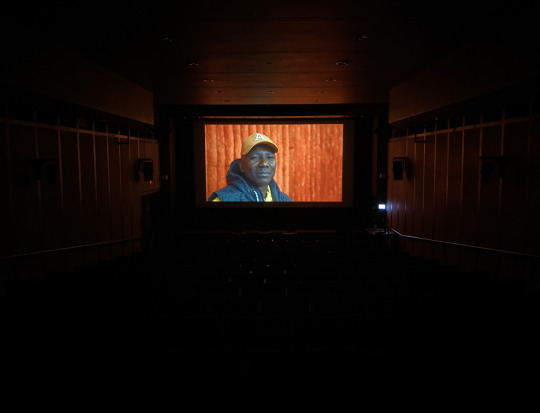
Thesis Study 03: Ah New Riddim, 2022
The journey towards making this installation, this documentary, and this body of work has been fluxed with moments of discovery, failures, successes, and triumphs, albeit small and transitory. Unlike previous iterations (Constructs and Context Relativity I & II), the writing has been instrumental to the project’s development and countenance. Major progress in production has emerged through significant writing, research, and ruminations on concept, lineage, artistic approach, and methodology. This semester, I presented new footage in an extended linear excerpt of my thesis to my cohort and faculty in MIT’s School of Architecture + Planning Bartos theater.
I look forward to piecing all parts of this project together in the days ahead. Although it is rather ambitious, I am undoubtedly up for the challenge. Special thanks to faculty and staff of MIT’s Art, Culture and Technology program and guest critics, Tania Bruguera and Stefanie Hessler.
Working Statement: Ah New Riddim is an immersive multi-channel installation and interactive documentary that examines the spatial-temporal relations of memory and place embedded within the cultural appropriation of dancehall in American urban space. The film utilizes 80’s dancehall archival footage of my father and the quiet of black subjectivity to expound the relationship between black globality, dancehall, and American locality. As a placemaking production, how do the body’s grammar, symbols, and socio-cultural practices articulate notions of locality? In Ah New Riddim, dancehall functions as a placemaking production. It makes visible the temporal politics of locality, and evokes a sweet sense of home grounded in the cultural assemblage of identities and collective memory. Although ‘back home’ is never made visible in the film, the notion of “back home” translates as a feeling activated through the presence of the body and material objects in relation. The project demonstrates how space is transformed and contested through the spatial practices of its locale. It utilizes the quotidian elements of my subject’s inner life to decentralize universal narratives imbued within visual representations of the urban and considers the potential of interactive storytelling, immersive inter-sensory installation, and performance in exploring sensorial evocations of place.
Credits:
ACT Final review documentation of my presentation. Image courtesy of Gearoid Dolan, ACT.
ACT Final review documentation of my presentation. Image courtesy of Gearoid Dolan, ACT.
ACT Final documentation featuring footage of Architecture in East Flatbush.
ACT Final documentation featuring contemporary footage of my father, Joseph Neptune.
5 notes
·
View notes
Text
Philosophers and performance
Jacques Derrida: Derrida's ideas about deconstruction have been influential in the development of performance art, particularly in terms of the ways in which artists have sought to critique dominant cultural narratives and deconstruct power structures.
Michel Foucault: Foucault's ideas about power, knowledge, and the construction of the self have been influential in the development of performance art, particularly in terms of the ways in which artists have sought to critique dominant cultural narratives and deconstruct power structures.
Friedrich Nietzsche: Nietzsche's ideas about the will to power, the transvaluation of values, and the role of the artist as a cultural rebel have been influential in the development of performance art, particularly in terms of the ways in which artists have sought to critique dominant cultural norms and create new narratives.
Jean Baudrillard: Baudrillard's ideas about simulation, hyperreality, and the collapse of meaning have been influential in the development of performance art, particularly in terms of the ways in which artists have sought to critique dominant cultural narratives and create new ways of thinking about these issues.
These are just a few examples of philosophers whose ideas have influenced the development of performance art. There are many others, and the relationships between philosophy and performance are complex and multifaceted. Nevertheless, these thinkers have helped to shape the field of performance art and have influenced the ways in which artists and audiences think about performance and its role in society.
Jacques Derrida:
Adrian Piper: As mentioned earlier, Piper is an American performance artist and conceptual artist who has been influenced by Derrida's ideas about deconstruction. Her work often explores issues of identity and difference, and she uses performance to critique dominant cultural narratives and to create new ways of thinking about these issues.
Tania Bruguera: Bruguera's work, as mentioned earlier, critiques political systems and power structures and draws upon Derrida's ideas about deconstruction to challenge dominant cultural norms.
Michel Foucault:
Guillermo Gómez-Peña: As mentioned earlier, Gómez-Peña is a Mexican-American performance artist who explores the intersections of identity, culture, and power. He has been influenced by Foucault's ideas about power, knowledge, and the construction of the self, and his performances often challenge dominant cultural narratives and seek to create new spaces for dialogue and debate.
Coco Fusco: Fusco, as mentioned earlier, uses her work to critique political systems and power structures and has been influenced by Foucault's ideas about power and the construction of the self.
Friedrich Nietzsche:
Marina Abramović: As mentioned earlier, Abramović is a Serbian performance artist who is known for her often challenging and provocative work. She has been influenced by Nietzsche's ideas about the will to power, the transvaluation of values, and the role of the artist as a cultural rebel, and her performances often explore the boundaries between the self and the other, as well as the relationship between the performer and the audience.
Tehching Hsieh: Hsieh, as mentioned earlier, creates work that explores themes of time, endurance, and the body. He has been influenced by Nietzsche's ideas about the will to power and the role of the artist as a cultural rebel, and his performances often challenge dominant cultural norms and seek to create new spaces for dialogue and debate.
Jean Baudrillard:
Jerôme Bel: Bel, as mentioned earlier, creates works that challenge the conventions of traditional theater and performance. He has been influenced by Baudrillard's ideas about simulation, hyperreality, and the collapse of meaning, and his performances often seek to create new spaces for dialogue and debate.
Yvonne Rainer: Rainer, as mentioned earlier, is an American dancer, choreographer, and filmmaker who has been influenced by Baudrillard's ideas about simulation and hyperreality. Her work often explores the boundaries between the self and the other, and she uses performance to critique dominant cultural norms and to create new narratives.
2 notes
·
View notes
Text
0 notes
Text
Christie's, arte cubano, subastas de arte latinoamericano
Christie’s, arte cubano, subastas de arte latinoamericano

View On WordPress
#Alexander Arrechea#Belkis Ayón#Eduardo Ponjuán#hablandodemercadodearte#Los Carpinteros#Manuel Mendive#René Francisco#Roberto Fabelo#Tania Bruguera#Tomás Sánchez#Wifredo Lam#Yoan Capote
1 note
·
View note
Text
Ganadores de Eurovisión venden trofeo por 900.000 dólares para comprar drones para Ucrania, ¿qué espera Yotuel Romero para hacer lo mismo...? -
Ganadores de Eurovisión venden trofeo por 900.000 dólares para comprar drones para Ucrania, ¿qué espera Yotuel Romero para hacer lo mismo…? –
Por GEORG SZALAI/Trad. ZoePost. La banda ucraniana Kalush Orchestra, que ganó el Festival de la Canción de Eurovisión, vendió su trofeo por 900.000 dólares para recaudar fondos para drones para las fuerzas armadas del país que luchan contra la invasión de Rusia. El dinero recaudado se usaría para comprar tres drones PD-2 fabricados en Ucrania , anunció el presentador de televisión Serhiy Prytula,…

View On WordPress
0 notes
Text
“Eating dirt, which is sacred and a symbol of permanence, is like swallowing one’s own traditions, one’s own heritage, it’s like erasing oneself, electing suicide as a way of defending oneself,” “What I did was take this historical anecdote and update it to the present.” - Tania Bruguera
0 notes
Text
El arte como forma de luchar contra la injusticia
¿Cómo usan el arte para demostrar y ayudar a las víctimas de injusticia?
En América Latina recientemente, muchos artistas han usado su arte para demostrar y ayudar a las víctimas de injusticia. Por ejemplo, según el artículo, Doris Salcedo es una artista de Colombia que hace arte para honrar a las víctimas de violencia y opresión política. Según al fuente por Artsy.net Salcedo usa sus obras espiritual para implicar temas de la ausencia y la pérdida. Un ejemplo específico es su serie de obras que se llama desmembrado (Dismembered, 2014). Esta serie contiene prendas de seda que son un homenaje a las madres que perdieron a sus hijos por la violencia de armas. Doris Salcedo utiliza prendas, materiales, colores y composiciones específicas para representar estas formas de pérdida e injusticia. Esto también ayuda a provocar sentimientos de tristeza asociados a esta injusticia.

Tania Bruguera es otra artista que usa su arte para demostrar y ayudar a las víctimas de injusticia. Una manera en que ella hace esto es sobre los temas de derechos humanos, inmigración y totalitarismo. Ella usa su arte para ayudar a las víctimas de injusticia y también habla de estas formas de injusticia. Un ejemplo en su arte es su obra El cuerpo del silencio (The Body of Silence, 1997)
Creo que es importante que los artistas usan su arte para demostrar y ayudar a las víctimas de injusticia. Su arte da una voz a las personas que de lo contrario no tienen una voz. Parece que el arte es una forma de comunicación y los artistas que comparten sus creencias políticas y sociales en sus obras crean una manera otra para hacer conversaciones importantes. Por ejemplo, las obras de Doris Salcedo pueden invocar emociones de tristeza y empatía por las víctimas de violencia. Muchas personas ven sus obras de arte, por lo que muchas personas podrán comprender estas tópicas importantes. Han sido muchos tiempos en la historia en que personas han recibido justicia después de hablar sobre injusticia. Es mucho más difícil recibir justicia cuando no hay nadie que te hable. El arte es algo que une a las personas y es una excelente manera de crear conciencia sobre temas sociales, políticas, y más. A lo largo de los últimos años, el arte latinoamericano ha evolucionado aún más hacia una forma compleja de compartir pensamientos y sentimientos.
Fuentes -
Doris Salcedo y su obra de arte - https://www.artsy.net/artist/doris-salcedo
Tania Bruguera - https://www.thecollector.com/tania-bruguera-art/
0 notes
Text
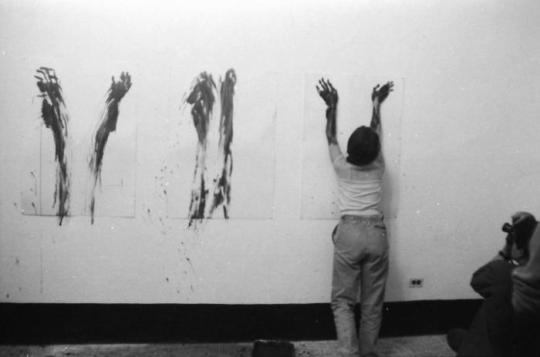


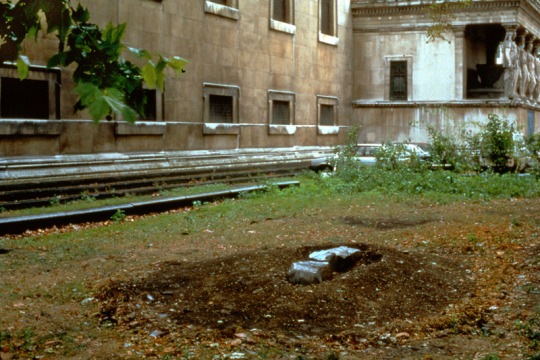
Tania Bruguera Homenaje a Ana Mendieta (1985-1996)
“The appropriation, reconstruction and re-exhibition of Ana Mendieta’s pieces in the Cuban context stem from the idea of art as a cultural, sociological not merely artistic gesture, with the intention of relocating the figure of this artist in the history of Cuban culture and collective imaginary as a representative of Cuban culture. This project was made during the years of massive migration of the Cuban population in general and, specifically in the sector of culture, of the so-called “generation of the ‘80s.” The official policy on migration at the time was silenced by the media and the official culture because of its political impact. This is why Bruguera’s first gesture approaches the notions of political art and the confrontation with structures of authority.
Tribute to Ana Mendieta is a piece interested in creating an art that uses codes of disciplines like History of Art and Archeology. It was made through a research and rescue process visualized through the repetition of pieces that had already been exhibited or outlined and that were remade taking into account the characteristics of the new context.”
27 notes
·
View notes
